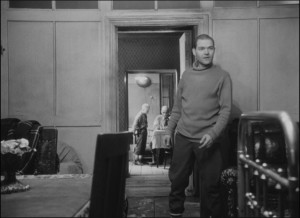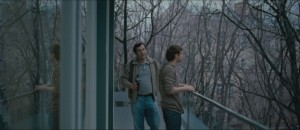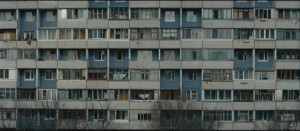Cassio de Oliveira, Vanderbilt University
As a socio-economic phenomenon, gentrification (in Russian, джентрификация) finds staunch advocates as well as vocal critics. The most typical examples of gentrification—from inner-city London to New York’s neighborhoods of Harlem and Williamsburg, to (all of) San Francisco—consist of the renovation and remodeling of properties in low-income, formerly undesirable or neglected urban neighborhoods. The expectation of attracting high-middle-class families and individuals causes real estate speculation and rent or property-price inflation, with the attendant displacement of low-income dwellers. Defenders of gentrification argue that it results from the classical and fair interaction of market forces of supply and demand. Its critics argue that it constitutes one of the most jarring examples of the damage that predatory capitalism inflicts on the urban social fabric once government and civil society hand over the reins to individual actors (such as real estate developers and speculators, hipsters, and foreign magnates wishing to stash their money in a safe investment). These disagreements notwithstanding, both camps agree that gentrification is, at its core, an inherently capitalist occurrence, the purest manifestation of the invisible hand of the market, freed from zoning regulations, citizen protests, and postwar Brutalist architecture.
Thus there can be little talk of gentrification, as a product of market forces, in the Soviet period. However, since the fall of the Soviet Union, and especially following the momentous economic growth of the aughts as a result of the oil boom, there has been a distinct movement in Russia’s large cities toward the renovation and occasional reconstruction of neighborhoods. This can be seen, more frequently, in attempts to demolish perceived Soviet-era eyesores and replace them with new constructions, as the examples of the hotels “Rossiia” and “Moskva” demonstrate (the former was demolished, the latter not, following protests of architectural historians and other cultural groups); or it can manifest itself in the form of classical, Western-style, gentrification (as in the vicinity of the Serp i molot neighborhood in Moscow: http://www.the-village.ru/village/city/infrastructure/139299-serp-i-molot).

In the Soviet Union, a country faced with a permanent housing shortage throughout its existence, the average citizen’s dream was to have a private space of her own, regardless of where in the city it might be located (but see also inhabitants of communal apartments who prefer their central location to the privacy of the newer constructions in the outskirts of cities: http://kommunalka.colgate.edu/cfm/v_tours.cfm?ClipID=531&TourID=95). The Soviet ideal, expressed in a film such as Ironiia sud’by, ili S legkim parom! (The Irony of Fate, 1975, dir. El’dar Riazanov), was a form of anti-gentrification: a country of uniformly equal apartments, the doors to which can all be opened with the same key, located on streets with identical names, where the only differential is the geographical location of the city (in the film, Moscow and Leningrad) rather than the apartment itself.
Yet gentrification, at least as an aspirational goal, also manifested itself in Soviet times as the desire for one’s neighbors in a communal apartment to move out rather than as the desire to move elsewhere closer to the center. This is reflected, for instance, in Abram Room’s Tret’ia Meshchanskaia (or Liubov’ vtroem; Bed and Sofa, 1927), in which Volodia arrives in Moscow from the countryside and begins to live with his wartime friend Kolia and his wife Liuda. An affair between Liuda and Volodia ensues, and Kolia, a construction engineer, decides to leave the house, recognizing his ironic situation as he exclaims “I am a builder myself, and yet have nowhere to live” («Сам строю, а жить негде»). At its core, Bed and Sofa is not (just) a love triangle, but a tale of a different sort of exchanges, involving housing arrangements as well as social status. (Significantly, this tale takes place during the market-friendly NEP era.) At the end of the film, the men keep the well-located Moscow apartment, while Liuda, pregnant with a baby whose father is either of her two lovers, decides not to abort the child. Instead, she hops on a train, presumably to build socialism and raise her child in the country’s new frontiers.
In contrast with Room’s mock-kommunalka, Aleksei German’s Moi drug Ivan Lapshin (My Friend Ivan Lapshin, released 1984), set in the year 1936, depicts a collectivist utopia filtered by the grown-up’s glance back at his childhood among policemen who still earnestly believed in the rightfulness of their fight against banditry. German’s use of deep focus is particularly suitable to the portrayal of the multiple spaces – and inhabitants – of the policemen’s collective apartment.

The destruction of this utopia takes place in Khrustalev, mashinu! (Khrustalev, My Car!, 1998), German’s subsequent film. At the beginning of the film, the long takes emphasize the labyrinthine spaces of the elite mansion where Dr. Iurii Klenskii and his family live. As the film follows Klenskii’s downfall in the wake of the Doctors’ Plot in the late-Stalinist era, his wife and son experience—to a middle-class mentality—an even worse fate than Klenskii’s: they move to a communal apartment, losing the privacy and space afforded the Soviet elite. The move constitutes a nightmarish experience that contrasts sharply with the narrator’s gaze, at once wistful and ironic, on communal life in Lapshin.

Inhabiting a private space in the center of the capital, as Klenskii does on the eve of the Doctors’ Plot, might be the closest thing to gentrification that the Soviet middle class could enjoy. In post-Soviet cinema, however, gentrification is expressed as the yearning for a space which is not only private (with privacy having already become the crowning achievement of late-Soviet urban living), but also qualitatively better. It is such a yearning that Andrei Zviagintsev’s Elena (2011) addresses: the eponymous protagonist shuttles between her husband Vladimir’s smartly decorated, large flat in a posh Moscow neighborhood, and the cramped apartment in the outskirts of the city where her son Sergei lives with his wife and two children (with another one on the way). In an interview, Zviagintsev declared that “I would like to believe that ultimately in the film there is no distinction between ‘good and bad,’ ‘rich and poor’; there are instead representatives of different worlds, who are ‘caught’ at a given moment” («Мне хотелось бы верить, что на самом деле в фильме нет деления на “хороших-плохих, бедных-богатых”, а есть представительство от разных миров. Причем, они “схвачены” в определенный момент.», http://www.svoboda.mobi/a/24337571.html). It is such a moment that Elena, as the character who ties the different plotlines, makes possible; her literal and metaphorical travels expose the peculiar reality of gentrification in the post-Soviet era, in which the different worlds of center and periphery have been segregated altogether. Or so Vladimir, the husband, would wish: as he drives to the gym—located, significantly, in a repurposed industrial building—he passes by, and ignores, the crews of Central Asian laborers on their way to work.

Gentrification is portrayed in Elena as the product of market forces, insofar as Vladimir can afford the lifestyle of Moscow’s posh neighborhoods. The forces of personal privilege and connections rebel against this form of gentrification, as Sergei and his family move into Vladimir’s apartment after Elena murders him. As they used to do in their suburban apartment, Sergei and his adolescent son are shown leaning on the parapet in the balcony of the new apartment and spitting from there on the street.
Elena’s family leaves behind the nondescript grocery store and street fights under the shadow of the gigantic power station, yet it is unclear if it brings along the wherewithal required to incorporate the external values of the middle-high class. Despite Zviagintsev’s ostensibly nonjudgmental stance, Elena speaks to a specific set of middle-class values, foremost of all propriety. These values manifest themselves in the viewer’s simultaneous reproach and pragmatic understanding of Elena’s decision to kill Vladimir, as well as in the horror at the arrival of the suburban newcomers to a neighborhood, the good taste and homogeneity of which should remain untainted. To a middlebrow viewership spellbound by Zviagintsev’s sober aesthetics, the move (socially) up and (geographically) to the center represents both a tragedy and an aspirational goal.

Leviafan (Leviathan, 2014), Zviagintsev’s subsequent film, replays the emphasis on housing, property, and propriety that figures in the imaginary of Elena, but transfers the narrative to the surreal setting of a fictitious coastal village in the Russian Far North, where Kolya’s strangely stylish house with a view of the bay is confiscated by a mayor seemingly intent on using the land to build his own house. Like Elena, Leviathan speaks to some of the Russian middle class’ greatest fears—in this case, government abuse, violation of property rights, and destruction of the family nucleus. High-profile cases of international repercussion, such as the break-up and subsequent bankruptcy of Mikhail Khodorkovsky’s Yukos Oil Company in 2003, or the arrest and murder in prison of accountant Sergei Magnitsky in 2009, exemplify the societal problems that Leviathan addresses, yet the film treats these issues as a systemic issue affecting all of Russia’s population, including its less-privileged middle-class citizens. As Andrei Movchan explains in reference to the all-encompassing ills of corruption, “You won’t open up a bakery if a bandit will come tomorrow and set fire to it. Or if a tax inspector will take all your money. Or the chairman of the town committee will turn up and eat up all your rolls” («Вы не откроете булочную, если завтра придет бандит и ее сожжет. Или налоговик – и все отберет. Или заявится председатель горсовета и съест все булочки.» https://slon.ru/posts/56922). Unlike Elena, however, Leviathan offers very little by way of material consolation. If anything, the closest to a (negative) catharsis offered by Leviathan consists of the demolition of Kolya’s house and foundation of a new church on the property—a not unusual occurrence at the state level in Russia, for instance in the case of Moscow’s Church of Christ the Savior, successively built on the former site of a monastery, demolished, then rebuilt decades later.

The ending of Leviathan may thus be a staunch reminder of the forces of destruction and reconstruction constantly at play in Russia’s real estate (as well as in society at large). Yet it is also symptomatic of the peculiar role played by non-monetary exchanges in Russia, something that may seem baffling to Russians and foreigners alike who wish to get their money’s worth when buying property: to these people, London and New York appear as better alternatives.
December 2015

